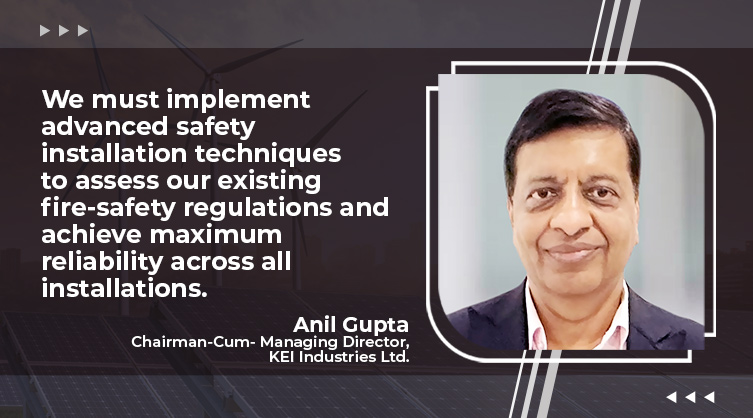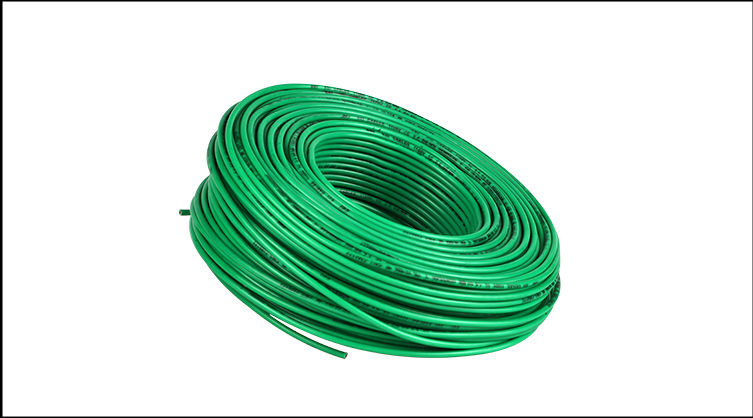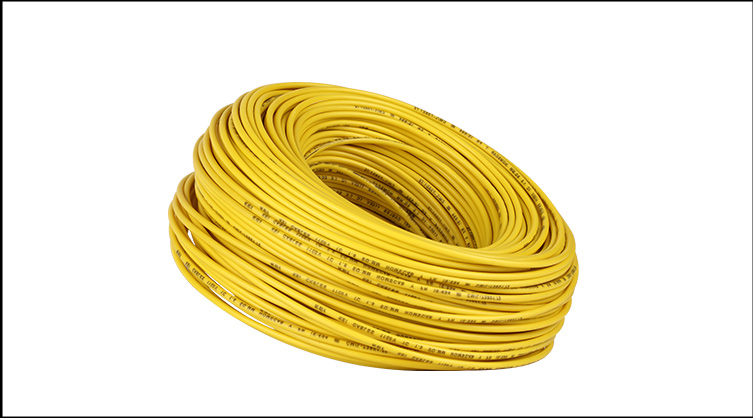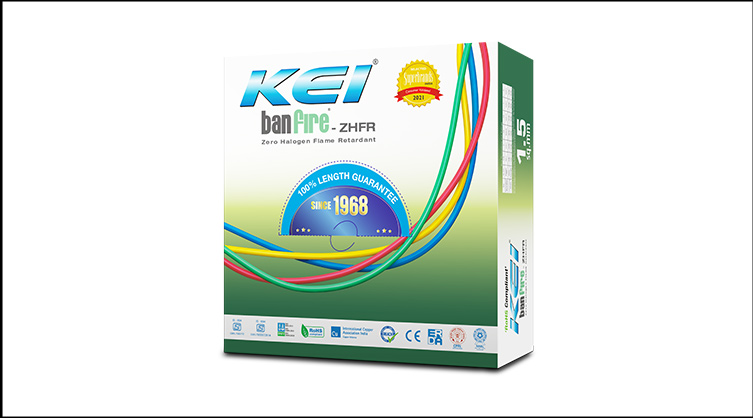Pushing sustainability and safety in wires and cables through social governance
By EPR Magazine Editorial March 27, 2023 8:53 pm IST
By EPR Magazine Editorial March 27, 2023 8:53 pm IST

Our commitment to quality, sustainability, and safety is evident in the products we offer and the projects we have contributed to, spanning multiple sectors and regions. We are proud to be a part of India’s growth story, says Anil Gupta, Chairman & Managing Director of KEI Industries.
How do your products, services, and solutions support sustainability efforts?
Our products and policies focus on reducing carbon emissions, protecting the environment from pollution, and implementing good labour practices. By producing carbon-neutral products and adopting carbon-neutral policies, we reduce the carbon footprint of our manufacturing process. We also ensure that our factories do not cause air or water pollution and provide our employees with adequate facilities. These measures align with environmental and social governance goals.

What installation practices should be followed to ensure electrical safety and security?
Our experience shows that poor workmanship during installation, such as improper wiring, accessory connection, and grounding of cables, is the primary cause of fire accidents. Therefore, electricians and electrical contractors must follow proper installation practices for electrical equipment to prevent accidents. While product failure is not a leading cause of accidents, proper installation practices are crucial to ensure safety and security.
We partner with various training agencies to ensure the quality of installations and the core skills of our installers. Our efforts fall under the ‘Skill India program, which we consistently pursue yearly. However, owners who hire contractors or electricians should also ensure they have the right experience to undertake the project.
Does the dominance of the unorganised sector in the Indian market contribute to an unsafe living environment?
The unorganised sector must often adhere to quality standards, resulting in substandard products that can cause accidents or product failures. Therefore, consumers and utilities need to be mindful of the brands and products they use rather than solely focusing on price.

How significant are the differences between ISI standards followed in India and international standards?
The ISI standards align with the international IEC standards, and there are no significant differences in the parameters between them. However, the quality of products depends on how well manufacturers adhere to these standards in terms of manufacturing, sustainability, and implementing proper systems and procedures.
What quality assurance and testing standards do you follow?
We maintain strict quality control measures throughout manufacturing, and NABL accredits all our testing laboratories. While most of our cables for projects undergo mandatory dispatch, retail markets often rely on our self-certification. Therefore, we follow rigorous testing practices to ensure our cables meet the applicable technical standards.
What is your perspective on green wires, and why isn’t the government encouraged to use them for infrastructure spending?
Green wires are halogen-free wires that do not emit black smoke in the case of a fire and do not release carbon dioxide. While their popularity is increasing, their usage percentage in India is relatively low due to their higher price. Although the government is gradually encouraging their use, the process could be faster due to the involvement of multiple agencies and consultants who are conscious of the cost.
How do you balance your orders and raw material levels to maintain a back-to-back arrangement and ensure your bottom line remains unaffected?
Our facilities can convert nearly 100,000 metric tons of copper and aluminium, but the total consumption, including insulating and armour materials, is around 300,000 to 400,000 tons. However, the conversion to kilometres of cables depends on the cable size being used.
Approximately 20% of our overall business comes from our domestic house-wire business. We see a further 10% contribution from cables used in the domestic market, while the remaining cables are directed towards infrastructure or industry. We are proud to serve clients across the globe, exporting our cables to several countries, such as the Middle East, Australia, Africa, Bangladesh, Nepal, and Sri Lanka.
We always strive to balance our orders and raw material levels to create a back-to-back arrangement, ensuring that our bottom lines remain unaffected.

What impact will the current market conditions have on the wires and cable business?
The government’s announcement of 10 lakh crores of capex this year (up from 7.5 lakh crores last year) is expected to impact our business positively. As our cables are essential to any capex project, we anticipate increased demand for our products as capex investment increases. We have provided cables for a diverse range of projects spanning multiple sectors. Our cables have been used in all metro projects, tunnel ventilation systems for Indian railways, highway projects, oil and gas projects, and industrial projects in mining, steel, cement, solar, and wind projects. Our contribution to these projects has made us proud to be a part of India’s growth story.
For more details visit: https://www.kei-ind.com/
We use cookies to personalize your experience. By continuing to visit this website you agree to our Terms & Conditions, Privacy Policy and Cookie Policy.